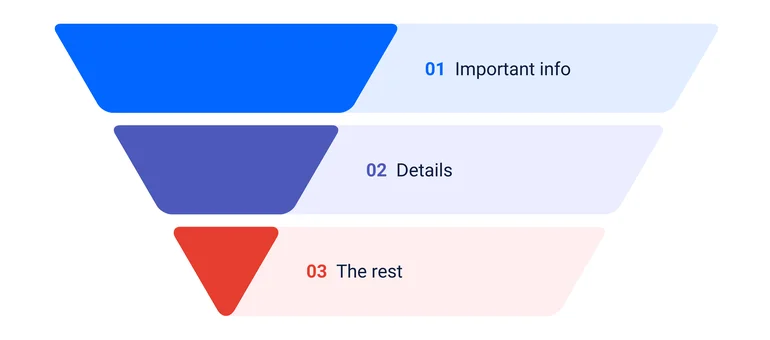
The website audit is not only about SEO. It is about design and UX, the lead generation process on your website and ease of administering the website, content of the website, and interaction with social media
You’ll see what functional areas you can and should improve and learn how to audit your website. This article is written by a content editor for content editors, website admins, and website owners who need to explain to their tech colleagues what’s wrong with their website.
Getting Started
If your website probably has dozens of web pages. It’s difficult to check them all at once, in a batch – you have other things to do after all. Website auditing is important, but choose up to ten pages that drive your business to its goal: the main page, a contact page, pages of the most popular products/groups of products. Check them first and make sure they work for you.
Usability
A website design welcomes your users and makes them either escape or stay and do what they came for on your website. A few years ago (human basic psychological features have barely changed since then) Google held a research and it was revealed that it takes less than a second to judge website’s attractiveness: those research participants labeled more complex websites as less attractive. What does it all have to deal with proper functioning?
The thing is, a brain prefers thinking of stuff that is easier to comprehend. Forget about complex designs not helping a website’s guest then. Or lose a newcomer.
Checklist
- Is the page structure is easy to distinguish: headers, titles (H1-H6), footers, content help a user navigate a page.
- If appropriate, consider using design breadcrumbs and footer links. Use heat maps to see if your website’s visitors click the footer’s links first. Check an SEO part of this article to learn what dangers you might face.
- Content density does not repulse a visitor: it’s divided by headings, pictures (that must help understand content), white space.
- Design leads the visitor to CTA links and buttons: interactive elements, hovers, etc.
- CTA is placed within the first ? of a user’s screen.
- Web design aligns with the company’s brand.
- The website renders well on all devices: users can easily do what they came for on desktops, mobiles, tablets, and so on.
- Check all visual elements of your design: background illustrations share the same style for the sake of a smooth transition between pages; all design elements (logo, favicons, headers, typography, colors used) don’t contradict each other, too.
If you followed the instructions above, you can see these parameters changing:
- A level of bounce rate decreases since the navigation is clear and users understand what to do next.
- Session duration should grow.
- Users execute the main CTA.
Lead generation process audit
Lead generation process follows the design and UX topic. As we already mentioned in the checklist, the design must help to convert visitors into leads.
checklist
- A page has a clear call-to-action (CTA) block: a button, a link – whatever converts the best.
- No more than 3 calls to action.
- CTA should be visible and reachable for users (for instance, don’t hide a CTA in the footer if your website’s visitors don’t tend to scroll the whole page).
- If a website visitors change their mind and leave a particular CTA unfinished (for example, a contact form left unfilled completely), you should give them another opportunity to dispel a doubt. You can show them a pop-up offering a free consultation/a knowledge base to get into details/asking a reason for leaving. The pop-up is a rather tricky method of communicating with users, but wisely used – it works. Learn what annoys the website’s visitors, when it’s appropriate to show the pop-up, how much time should pass before the pop-up is shown, etc.
Likewise in the previous block, if you followed the instructions above users would execute the main CTA and if something disrupts them – there’s a tool that helps users to complete the action. Conversion will grow, if it doesn’t, you go back to the web design and UX section and check what’s wrong.
Content audit
Let’s assume a page structure is wisely designed and users understand what actions they ought to perform to get what they came for. A menu does navigation work perfectly, and all that is left – not to repulse the users with content issues. They do read it, they really do!
checklist
- Content adheres to the page goal: if it is a contact page – content must stick to the ways the user can contact you. It’s a very obvious, yet a very common mistake. Keep the page goal in mind when filling it with content.
- Content is logically structured and doesn’t confuse users. Use Jakob Nielsen’s “Inverted Pyramid”: place the most important info first, then proceed with supporting details, and only after all add related information.
- No spelling and grammar mistakes.
- No extra content: only that drives a guest to CTA.
- Likewise, design in general, you should pay attention to content structure and how it’s divided: blocks, bullets, white space, and illustrative pictures.
Content improvement also facilitates the main goal execution: CTAs are being clicked/filled out/completed.
SEO audit
A search engine optimization part makes your content visible to a wider audience. Without specific terms, there are many technical operations you can do so that your content is found by more and more people. Some changes, like editing headings and the content itself, inserting links can be implemented without the programmer’s supervision, others require the help of a specialist.
SEO audit checklist
- Set up a correct tracking tool to track what’s going on with your website: keywords, traffic, entrance pages, exit pages, etc.
- Put appropriate content tags: title tags, description tags, image tags, meta tags.
- Use keywords and their synonyms in the headings, in the text itself.
- Eliminate broken links on your website.
- Make sure your content doesn’t have references to other sources at the very beginning: this way readers won’t leave your website too soon for Google Analytics or other tools to count it as a bounce and lower a website’s ranking in search.
- Think about using internal links on your website: in the footer, in content. Don’t party hard there. Such internal links must help users to continue their journey. If those links are inserted automatically, with the help of a bot, for example, Google can punish you: it treats links jamming into every matching word as a manipulation. You can find the results of such cross-linking at the end of the article.
- You’ve given enough attention to link building and there are other websites that refer to yours. Thus, Google treats your website as an authority one and ranks it higher. Of course, if websites that refer to your website are trustworthy 🙂
- Tune the server files that influence how search engines access your website and index it: .htaccess, robots.txt, sitemap.xml. This step can be pretty complicated for setting up without the programmer’s supervision, but try not to omit it. Google must crawl into and analyze your content correctly!
What SEO gives you:
- First of all, you understand what drives your traffic and what your traffic sources are. Then you impact them!
- You understand how users find content similar to yours and now organic traffic grows because you use tags, keywords wisely.
- A level of bounce rate decreases.
- A visitor spends more time on your website than before due to internal linking.
- After all, your ranking must be higher than before an SEO tuning.
Handle this small SEO analysis report to your web developer if you’re not sure you can implement it on your own.
Website maintenance checklist
Website speed and performance is very important to users. Does your website load in about 15-30 seconds? All researchers agree that the optimal load time is from 1.5 to 3 seconds. People don’t wait, and you will lose not only users but also potential customers. Google Search Engine considers website speed in their search rating, so we would like you to take the website optimization into account. Every millisecond counts.
Here are just a few basic and general suggestions for improving website performance.
- Check the loading speed of the website.
- Check the loading speed of the images.
- Check or enable the data caching. Drupal has a page caching feature in its core.
- Check the relevance of the codebase.
- Check the PHP version.
- Track errors through Google Analytics.
- Check Google PageSpeed optimization.
- Check the functionality of the site with the client’s help (as frequently as the website is updated).
Social media presence audit
Now an SEO part is fixed and your website is getting higher in a search. What else can help? Right: a big link mass and references from other resources.
Social media presence audit checklist
- Your company/brand is present at social networks: a public page, a group.
- You keep referring to your website at profiles in social networks and make sure content has a wide reach.
- Social media icons are embedded into the website’s footer or another appropriate place.
Having everything done right, you will see traffic from social networks growing.
Little tip before you go
Ease of administering/editing the website
When you’ve done everything for a user, consider checking how easy it is to edit a website and perform everyday routine actions. There’s no particular checklist for that because it mostly depends on a CMS you use. Make sure administrators of your website can create content pages without the help of a programmer. Make sure admins can present content the right way, too: for example, in Drupal, they can upload images, embed videos, align a text.
Farewell
Now you’re set to conduct your first own website audit. Don’t omit steps and soon you’ll see how better the things are going. If you know the things that we might have missed in this guide or need our advice, let us know.
And, of course, we offer website audit service so feel free to contact us for a non-obligatory consultation. Happy auditing!




